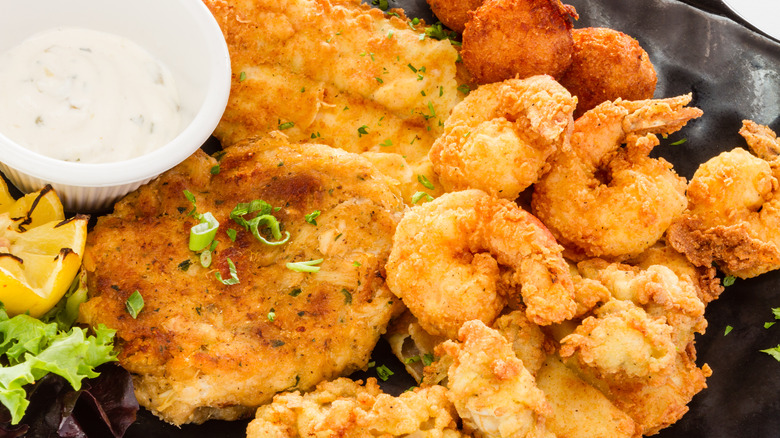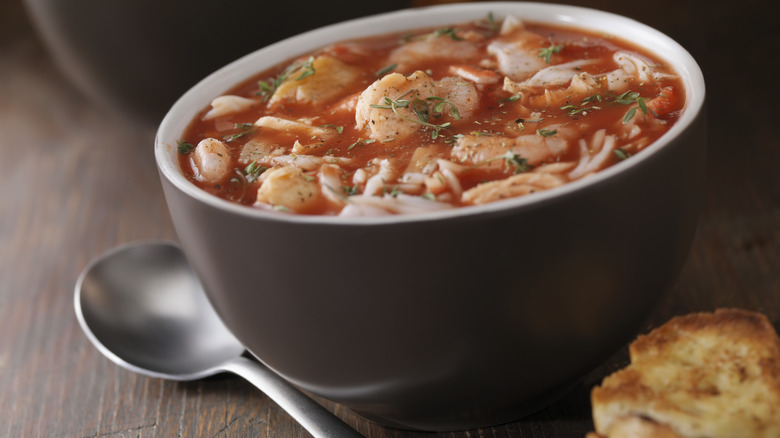The Type Of Dish Chefs Never Order At Non-Seafood Restaurants
Besides the obvious things like wearing a shirt inside a restaurant or remembering to pay for your meal when you've finished eating it, there are usually no hard rules about what or how you should order when dining out. As a patron, it is well within your right to order completely disparate à la carte items or request an irrational amount of modifications to your meal. But suppose you're interested in getting the best dining experience for your money and ensuring the back-of-house staff doesn't hate your guts. In that case, there are some useful guidelines according to those very chefs judging you from the kitchen that you can follow.
First and foremost, a chef might recommend what type of dish to never order when eating at a non-seafood restaurant. Non-seafood restaurants like steakhouses or pubs could be known for any number of reputable dishes, but seafood is probably not one of them. Chefs know that restaurants have to account for food waste, which factors into the freshness of the seafood that non-seafood restaurants are forced to serve. In simpler terms: Restaurants specializing in seafood get fresh seafood in stock more often, whereas non-seafood restaurants may store theirs for upwards of eight months or more, which is the recommended maximum storage time for most fish. So instead of getting seafood that's likely past its prime, order something the non-seafood restaurant actually specializes in.
More reasons to avoid seafood at non-seafood restaurants
Admittedly, not all non-seafood restaurants are only serving eight-month-old fish. It's more common these days to find businesses that focus on showcasing seasonality, from in-season vegetables to fresh catches of the day. Having a general idea about when these types of restaurants are likely to get their produce delivered (especially in non-coastal areas) is like being able to read code in "The Matrix." Chef and owner of BaoHaus, Eddie Huang, confirms that most restaurants stock up on Friday morning to prepare for the weekend and as a result, aren't able to get the next shipment of produce or seafood until early the following week. That means if they are advertising fresh seafood, it's lost much of that freshness by Sunday and possibly Monday lunch.
A couple of other red flags to look out for when restaurants are trying to offload seafood are when servers are pushing specials or "soup of the day" containing seafood. These are effective ways kitchens can repurpose ingredients and mask some potentially off-putting qualities, like a mildly fishy smell. If it sounds like restaurants are purposely trying to make people sick in order to save a few bucks, you can rest assured that these days health and safety standards are very effective at minimizing this type of malpractice. This is strictly about getting the best quality for your dollar, even if that means getting a patty melt instead of fish and chips at your local Irish pub.

